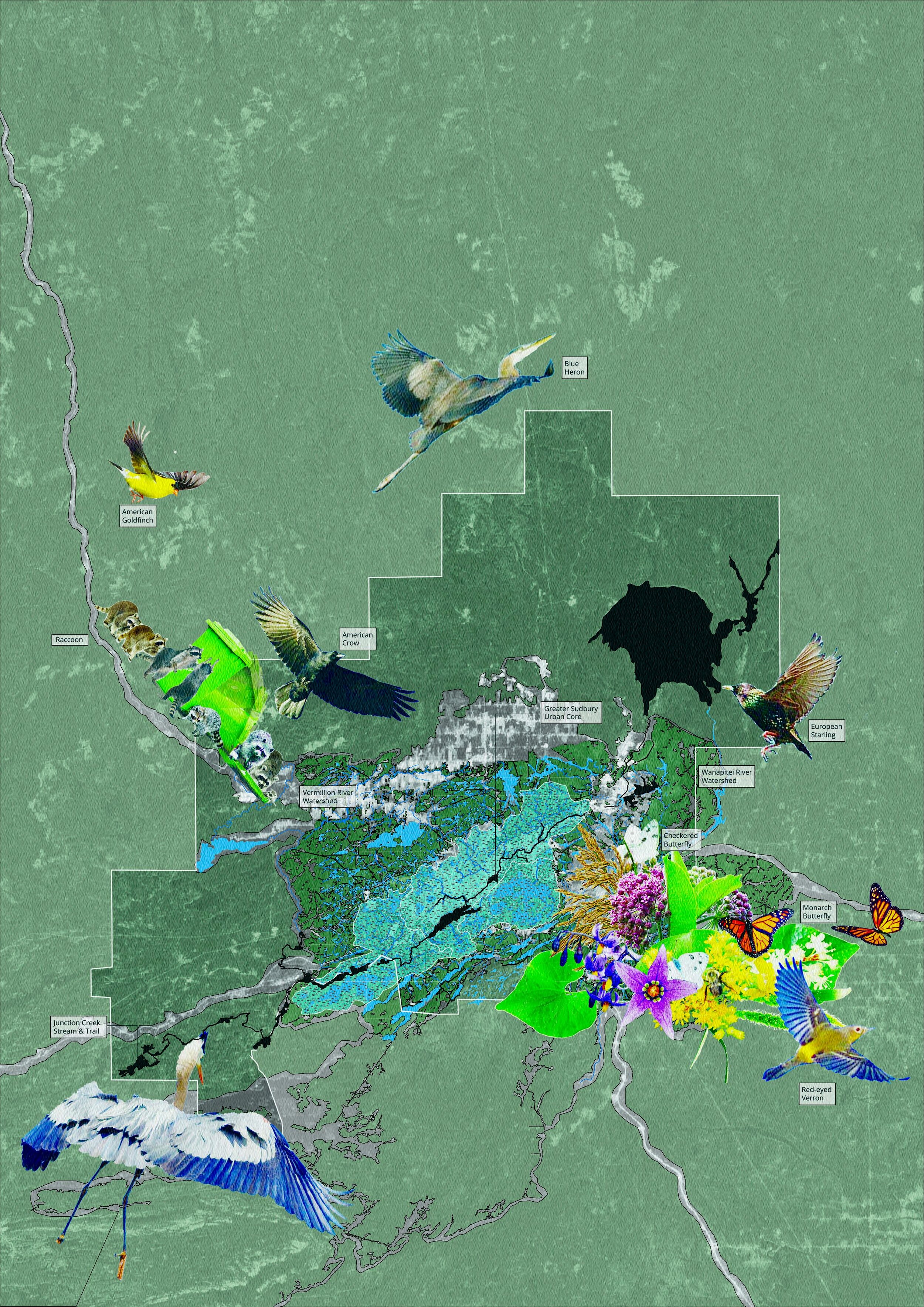pollinating sudbury: curating scenarios
Sudbury 2050: Urban Design Ideas Competition • Finalist
Tommy Yang • Dongsei Kim (NYIT)
We begin our study by acknowledging the Robinson-Huron Treaty of 1850. We also recognize that the locations of the study include the traditional lands of the Atikameksheng Anishnawbek First Nation and the traditional lands of the Wahnapitae First Nation. We extend our deepest respect to all Indigenous peoples.
Architects and designers often put forward master plans with concrete solutions for troubled cities. However, we argue that the critical reading of a place must precede any proposal. In addition to its current normative understanding, we believe a critical and novel way of reading Sudbury’s current condition is necessary to project its better future.
In this sense, we see critically mapping Sudbury and its people, of their past, present, and future is at the core of this project. Our series of mappings that span across a range of physical scales (personal experience to regional scale) and time scales (24-hour cycle, to geological, longue durée) starts to reveal important ingredients of Sudbury. Rather than aiming to render a seamless space of consensus, our project aims to first reveal controversies, frictions, and antagonisms of the place.
With these ingredients at hand, the project provokes and asks difficult questions rather than providing precipitous answers. The project aims to help Sudbury’s stakeholders to better frame and formulate what alternative future scenarios might lie ahead.
We examine current Sudbury’s condition against C. S. Holling’s Modified figure eight that explicates his Ecosystem Dynamics and adaptive design approaches that reframe the future of Sudbury region.
Miigwech.
Pollinating Sudbury engages critical cartography as a method and maps out important natural resources such as the Junction Creek, Wanapitei and Vermillion Riversheds and frames them as sites for planting social and green practices.
RECLAMATION
Advocates and community helps to reclaim major territories of Greater Sudbury. Deconstructing mines and building new infrastructures: Eco-Corridors, Local Making, and Education Points
To counteract the high acidity in the soil, agricultural limestone (calcium carbonate, CaC03) or granular dolomitic limestone (calcium and magnesium carbonate, MgC03) can be used. It is known that calcium reduces toxicity of metals such as nickel, copper, and aluminum while controlling the movement of nutrients and toxic materials into the root cells.
PRODUCTION
Base on the existing sites and communities, the site will be divided into different types of productive land for growing, nurturing, harvesting and making. These products and resources grown will be come an autonomous source for the creation of New Sudbury.
LOCALIZATION
Through the localization of Sudbury, community trusts and boards can established their own funds that will be used for building, maintaining, and functioning the city within New Sudbury.
Pollinated Sudbury will become an example of taking back the world of Sudbury to a more ecologically diverse state.





